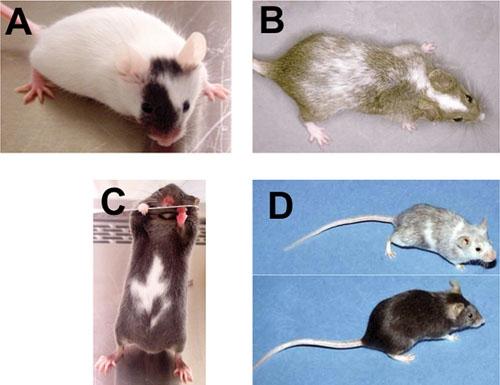This is an in vivo test in mice in which developing embryos are exposed to the chemicals. The targetcells in the developing embryos are melanoblasts, and the target genes are those which control the pigmentation of the coat hairs. The developing embryos are heterozygous for a number of these coatcolour genes. A mutation in, or loss of (by a variety of genetic events), the dominant allele of such a gene in a melanoblast results in the expression of the recessive phenotype in its descendant cells, constituting a spot of changed colour in the coat of the resulting mouse. The number of offspring with these spots, mutations, are scored and their frequency is compared with that among offspring resulting from embryos treated with the solvent only. The mouse spot test detects presumed somatic mutations infoetal cells.
Procedure:
A single treatment is normally given on day 8,9 or 10 of pregnancy, counting as day 1 the day onwhich the vaginal plug is first observed. These days correspond to 7,25 , 8,25 and 9,25 days after conception. Successive treatments over these days may be used.
Analysis:
The offspring are coded and scored for spots between three and four weeks after birth. Three classes of spots are distinguished:
(a) white spots within 5 mm of the mid-ventralline which are presumed to result from cell killing (WMVS);
(b) yellow, agouti-like, spots associated with mammae, genitalia, throat, axillary and inguinal areas and on the mid-forehead, which are presumed to result from misdifferentiation (MDS);
(c) pigmented and white spots randomly distributed on the coat which are presumed to result fromsomatic mutations (RS).All three classes are scored but only the last, RS, is of genetic relevance.
Problems of distinguishing between MDS and RS may be solved by fluorescence microscopy of sample hairs. Obvious gross morphological abnormalities of the offspring should be noted.
The data are presented as the total number of offspring scored and the number having one or more presumed somatic mutation spots. Treatment and negative control data are compared by appropriate methods. Data are also presented on a per-litter basis.
